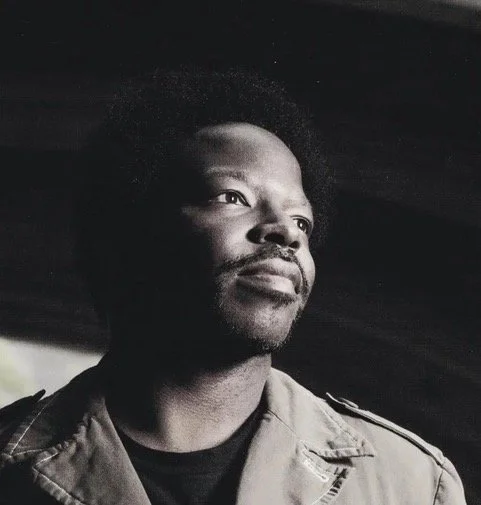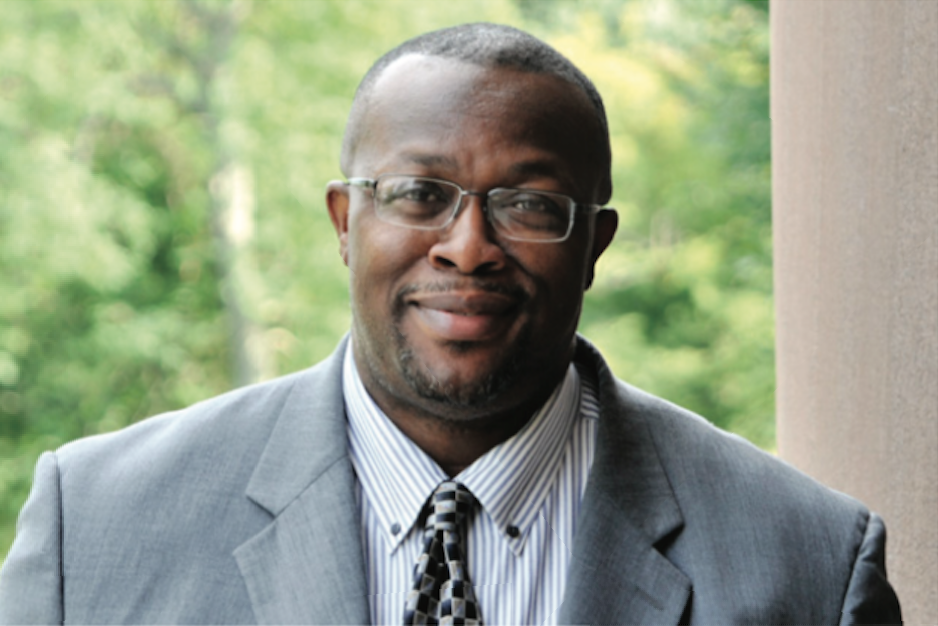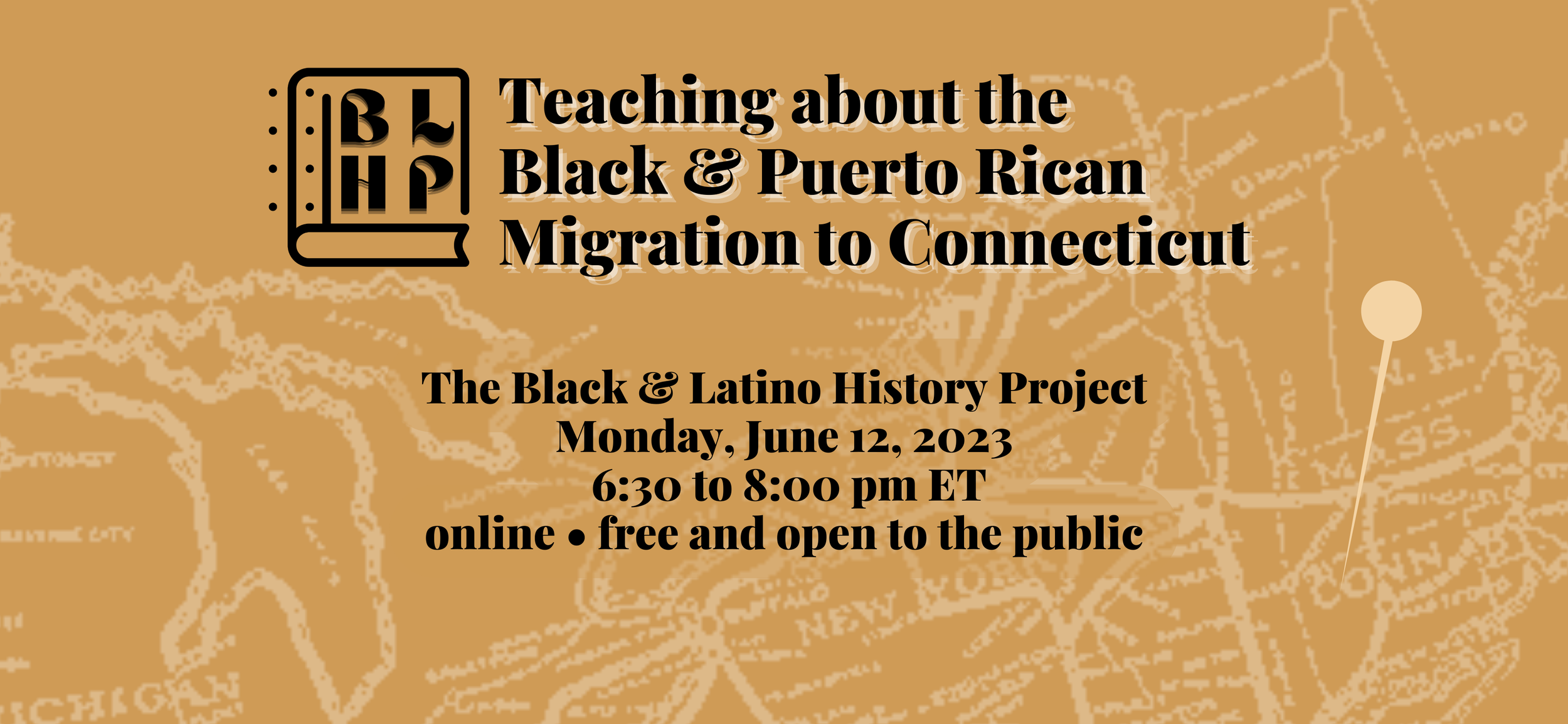
20th Century Black and Puerto Rican
Migrations to Connecticut
The history of the exodus of some six million people of African descent from the rural South to northern cities during the early and mid-20th century typically focuses on the development of major Black communities in cities like Chicago, Philadelphia, and New York City. However, little attention has been given to the movement of Black people fleeing violent oppression in the South nor the migrations of Puerto Ricans and other Latin American peoples to Connecticut and New England. To help Connecticut teachers develop curricula based on this theme, this unit focuses on the influence of Southern-born Black, West Indian, and Puerto Rican populations on the state’s cultural and political landscapes, particularly in urban communities such as New Haven, Hartford, Bridgeport, and Waterbury. The lead professor will be Stacey Close, Professor of African American history at Eastern Connecticut State University. Guest speakers will include Fiona Vernal (UCONN) and public historian Frank Mitchell. This unit will rely on oral histories, newspaper archives, photographs, census and genealogical records, and other archival sources. It will also facilitate place-based learning, encouraging teachers to use the student’s neighborhoods and communities as living laboratories to explore how notions of belonging form and shift; how ethnic identity is expressed through cultural elements such as foodways, music, festivals, attire; and other dimensions of community formation and change through time.
Instructors:
20th Century Black and Puerto Rican Migrations to Connecticut
Lesson Plans & Presentations
-
Elizabeth Berry, Art Teacher
Booker T. Washington Academy, 4th grade
New Haven, CTMs. Berry’s 4th grade art lesson invites students to create an artwork based on the history of the Great Migration. Time is also spent viewing and discussion “The Migration Series,” by Jacob Lawrence.
-
Krista Bouregy, Art Teacher
Integrated Charter School, Norwich, 4th grade
Norwich, CTMs. Bouregy’s students will learn how different artistic expressions (painting, dance, music, etc.) can show us the culture of Black, Puerto Rican, and West Indian migrants historically and today.
-
Daisha Brabham, history teacher
Windsor High School
Windsor, CTThrough the creation and use of oral histories, visual timelines, materials from the Windsor Historical Society’s Black History Website, and a digital story made, Ms. Brabham’s students will learn about the migration of Black and Latino people to Windsor, their neighborhoods, and the past and present challenges they’ve faced.
-
Lucia Brea, teacher
English as New Language/Geography
Integrated Charter School, Norwich
Norwich, CTMs. Brea’s students will be able to understand why and how people migrate within the United States/throughout the world. Students will then use their own movement and the movement of their families, the push and pull factors on a map and on a timeline, to show their migration.
-
Michelle Dunbar
English Literature
Westhill High School
Stamford, CTThrough the use of archival oral histories and interviewing family members and neighbors, Ms. Dunbar’s students will learn more about the complex reasons people migrate to other countries or other parts of the United States.
-
Joseph Lewerk
US Government and Black & Latino Studies
Killingly High School
Killingly, CTMr. Lewerk’s students will study the similarities and differences for two groups who migrated to eastern Connecticut in the 20th century, Puerto Ricans to Willimantic/Windham, Connecticut and African-Americans to Norwich, Connecticut. They will consider why people migrate in general and why these two groups in particular migrated, and then examine each group’s experience and conclude by presenting what they have discovered.
-
E. Michelle Maitland
6th Grade World History
Holyoke Middle School
Holyoke, MAIn this lesson plan, Ms. Maitland invites her students to explore the "little ‘trickles’ of The Great Migration occurred prior to the 20th Century.”
-
Joshua Orlinsky
AA/Latino Studies, US History, Economics
Platt High School
Meriden, CTMr. Orlinsky’s lesson on Connecticut migration begins with a discussion about when migrations were taking place, along with family legacies (most of his students have a history of recent migration). His lesson goes on to consider the opportunities and drawbacks serve to confirm or dispel perceptions about CT and other places, and also to take mental notes about areas of student interest (racism, equitable opportunities, population demographics) for further research.
-
Colleen Simon
Humanities - History and ELA
Solomon Schechter Day School of Greater Hartford
West Hartford, CTBeginning with an introduction into the Great Migration, Ms. Simon’s lesson considers how the experiences of Connecticut residents add to the story of the Great Migration? The lesson goes on to instruct students in conduction oral history interviews, to learn more about the reasons people migrated to Connecticut.
-
Kevin Staton
In Mr. Staton’s lesson plan students will complete an analysis paper based on the impact of housing policy, migration patterns, and local geography in relation to the themes of safety and security communicated in Ta Nehisi Coates's Between the World and Me.
-
Compiled by Elena Marie Rosario, M.A.
April 2023
These lesson plans were developed in conjunction with “20th Century Black and Puerto Rican Migrations to Connecticut”, an educational working group developed by the Black & Latino History Project (BLHP). The following video is taken from a webinar on the working group, which aired on June 12, 2023.




